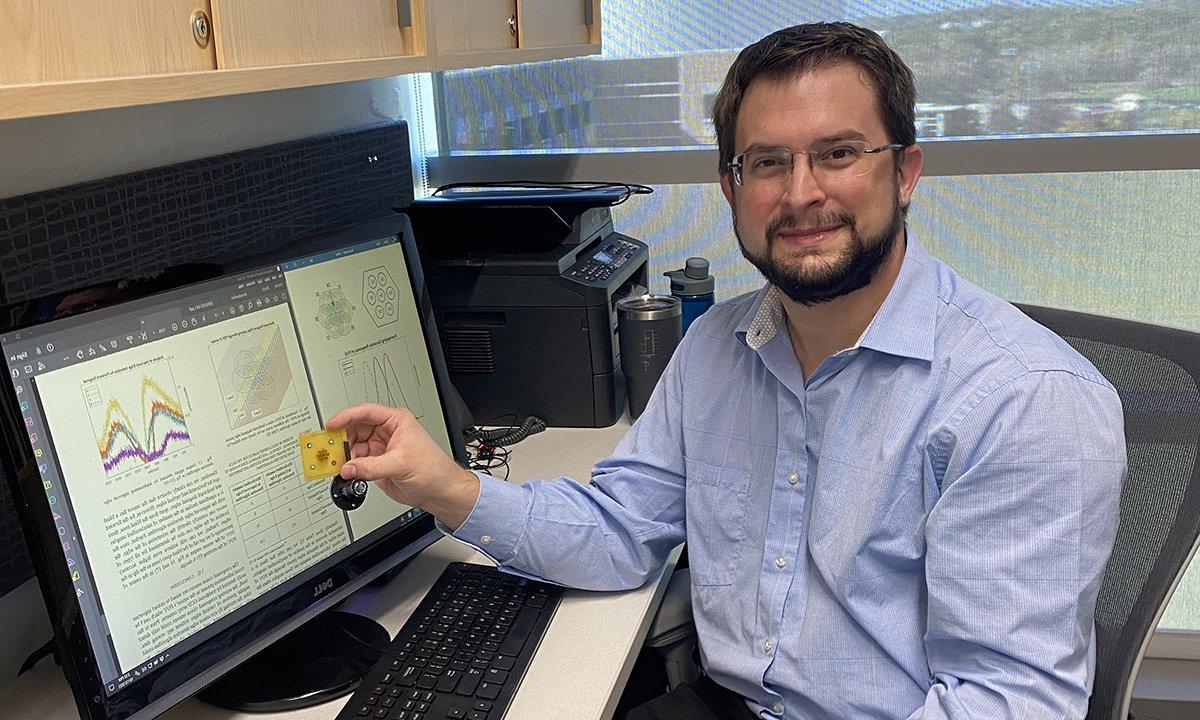站在前沿
Dr. Xu is building a one-for-all edge collaboration system to overcome the problem of scarce annotation that is hindering AI implementation into medical imaging.

Supported by a recent grant from the National Science Foundation, Dr. Xu’s project strives to innovatively train multiple medical imaging tasks together with a cache mechanism to build an efficient and effective multi-institutional collaborative system.
徐兰宇博士.D., 计算机科学与工程助理教授, medicine is the art of compassionate care that combines scientific wisdom with the most advanced tools. 信息技术的最新进展, specifically in machine learning and artificial intelligence (AI), have shown significant promise for AI-based medical devices in 诊断, 管理, 以及各种疾病的药物开发. As scientists are increasingly looking for ways to implement AI into medical imaging, Dr. Xu is building a one-for-all edge collaboration system to overcome the problem of scarce annotation that is hindering the progress.
Automatic medical image segmentation has an enormous potential to alleviate the workload for clinicians due to its ability to learn complex representations in a data-driven manner. Augmenting the technology of computer vision and machine learning in medical image segmentation improves clinical workflow efficiency and reduces clinicians’ repetitive work tasks. Although supervised machine learning (SML) algorithms have been thoroughly investigated in medical image analysis research, training SML models to perform analysis tasks on bioimaging datasets is challenging due to scarce annotation.
“The success of an AI algorithm is directly correlated with the quality and size of datasets. This task requires a large amount of precisely annotated images, 这并不总是可能的,因为道德, time, 或者成本考虑. And often, there are only a small set of labeled data and unlabeled images that are available. Scarce annotation significantly restricts the size and growth of medical image datasets,” Dr. 徐解释说.
为了解决缺少注释的问题,Dr. 徐先生是OU计算机科学硕士研究生, 李风扇, initially investigated the multi-institutional collaboration as an emerging deployment of medical imaging processing. Noticing a lack of investigation of the distributed system performance, 比如协作和效率之间的取舍, 研究人员提出了一个分布式系统, based on deep reinforcement learning for medical image segmentation. They conducted preliminary experiments on single and multiple central and graphics processing unit environments to demonstrate the system performance and the trade-off.
“What we learned is that the multi-institutional collaboration involves substantial computation and communication costs to train a dedicated model for only one type of task, 我们认为这是低效的,” Dr. 徐说. ”而不是, 许多研究都证明了这一点, 虽然在高级特性上有所不同, 传统图像具有相同的粗糙特征, 哪些可以被模型利用. 我们相信医学成像也是如此. 因此, 我们现在专注于开发一个可共享的, 或者我为人人, model for multiple tasks to address the scarce annotation problem in a more efficient manner,她补充道.
The one-for-all model seeks to discover the underlying connections and similarities among medical images. It is based on obtaining multi-scale features from training a shareable model to fine-tune multiple tasks. Supported by a recent grant from the National Science Foundation, Dr. Xu’s project strives to innovatively train multiple medical imaging tasks together with a cache mechanism to build an efficient and effective multi-institutional collaborative system.
The goals of the research are to design a multi-task learning model for medical imaging tasks, create a cache mechanism for the system to activate relevant portions when interpreting a specific task, and to develop a prototype distributed multi-task learning system for medical imaging.
“Creating a one-for-all collaboration system for medical imaging will bring a significant technological breakthrough toward achieving practical AI in a clinical setting,丹尼尔·阿洛伊说, Ph.D., SECS研究主任. “这将促进机构和机构之间的模式共享, 因此, 是否有助于提高临床检测, 诊断, 和治疗.”
Medical imaging, however, is not the only area of the model’s application. Dr. Xu believes it to be a general-purpose framework that can be utilized in other fields with similar application requirements.
“Our one-for-all model will be used for image analysis to simultaneously perform multiple related tasks using the same set of input data. 在医学成像中, 这些任务通常包括分段, 分类, 检测, 登记, 等等....... Similarly, we can use this model for autonomous driving, for example. It will detect objects on the road while simultaneously identifying lane boundaries, 分割驾驶车道, and contributing to safer and more reliable autonomous driving systems. 在机器人, the model can detect the object and analyze the best point to manipulate the machine,范蠡说.
The proposed system can also be easily adapted to other scenarios, 比如智能家居和智能交通, and used for undergraduate and graduate education and research with the goal of inspiring students' interests in edge intelligence.
有人对博士感兴趣吗?. 许的工作可以联系她 (电子邮件保护)

 2023年12月20日
2023年12月20日 Arina Bokas著
Arina Bokas著

